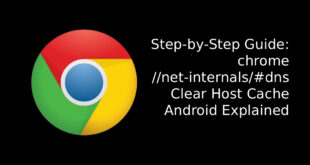If you’ve ever right-clicked on a webpage and chosen “View Page Source,” you’ve already peeked behind the curtain of the internet. What lies there isn’t magic, but the structure, style, and logic that make modern websites work. Recently, one such example that has caught the curiosity of many web enthusiasts is view:source:rockingwolvesradio.com/main/chatroom/chatroom.html.
At first glance, this may seem like just another URL — but for those who understand how web pages are built, viewing the source of such URLs reveals fascinating insights into web design, coding practices, chatroom functionality, and data security.
In this article, we’ll explore what the view:source:rockingwolvesradio.com/main/chatroom/chatroom.html example can teach developers, students, and even curious web users about how websites function. We’ll also discuss what you can (and cannot) do ethically when examining source code, and how this practice can help you learn web development more effectively.
Understanding “view:source:” – The Key to Looking Beneath the Surface
Before diving into view:source:rockingwolvesradio.com/main/chatroom/chatroom.html, let’s first understand what the view-source: prefix means.
When you type view-source: before a web address in your browser (like view-source:https://example.com), your browser shows the raw HTML, CSS, and sometimes JavaScript that powers that page. It’s like flipping a book over to read the author’s notes or checking out the blueprints of a house.
1. What You’ll See
When you open a page using view-source:, you’ll typically see:
- HTML tags – defining structure (
<div>,<p>,<header>,<footer>, etc.) - CSS links or inline styles – controlling how the site looks
- JavaScript code or external links – adding interactivity
- Meta tags – describing SEO and page metadata
- External resources – like fonts, images, or analytics scripts
2. What You Won’t See
You won’t see the server-side code (like PHP, Node.js, or Python) or private database content. That data is processed on the server before the browser even sees it.
So, when you open view:source:rockingwolvesradio.com/main/chatroom/chatroom.html, you’re not “hacking” — you’re simply observing what’s publicly available in your own browser.
The Example: view:source:rockingwolvesradio.com/main/chatroom/chatroom.html
Now let’s focus on our case study: view:source:rockingwolvesradio.com/main/chatroom/chatroom.html.
Rocking Wolves Radio, as the name suggests, is likely an online radio platform that includes a live chatroom feature. This chatroom allows listeners and community members to interact in real-time — an exciting and technically rich functionality.
By examining the source code of chatroom.html, one can uncover:
- How the HTML layout structures messages and usernames
- How CSS manages the appearance of chat bubbles
- How JavaScript handles message sending, refreshing, or updating without reloading the page
Even if you don’t see the backend (where messages are stored and managed), you can still learn a lot about how client-side code works in real-world applications.
What Developers Can Learn from Inspecting Source Code
Viewing the source code of real websites, including view:source:rockingwolvesradio.com/main/chatroom/chatroom.html, is an excellent way to learn modern web practices.
Here are some of the key lessons:
1. HTML Structure and Semantic Design
A well-built chatroom will have clear semantic structure — perhaps something like:
<div class="chat-container">
<div class="message">
<span class="username">DJWolf:</span>
<span class="text">Welcome to Rocking Wolves Radio Chat!</span>
</div>
</div>
From this, developers can learn:
- How to structure user messages
- How to separate content (text) from metadata (usernames, timestamps)
- How to organize DOM elements for easier JavaScript manipulation
2. CSS Styling and Responsiveness
Viewing the CSS code (either inline or linked externally) helps you understand how visual styles are applied. You might find:
- Chat bubbles aligned left or right using
floatorflexbox - Colors indicating sender identity (admin vs. user)
- Media queries making the chat mobile-friendly
For example:
.message {
padding: 10px;
border-radius: 8px;
background-color: #f2f2f2;
margin-bottom: 8px;
}
.username {
font-weight: bold;
color: #333;
}
By examining such styling, newcomers can grasp how design systems and color schemes enhance user experience.
3. JavaScript for Real-Time Interactivity
The most exciting part of chatrooms often lies in JavaScript.
While view:source:rockingwolvesradio.com/main/chatroom/chatroom.html may only show part of the client-side logic, it can reveal:
- AJAX or Fetch calls for retrieving and posting messages
- WebSocket connections enabling live updates
- DOM manipulation to dynamically display messages
For instance:
const socket = new WebSocket(‘wss://rockingwolvesradio.com/chat’);
socket.onmessage = function(event) {
const msg = JSON.parse(event.data);
displayMessage(msg.user, msg.text);
};
Studying such snippets can help learners understand how real-time communication works over the web.
Why Developers Should Study Public Source Code
Developers, both beginners and experts, often learn by observing how others build. Looking at the HTML of a well-functioning chatroom like view:source:rockingwolvesradio.com/main/chatroom/chatroom.html offers several benefits:
| Benefit | What You Learn |
|---|---|
| Code Structure | How professionals organize and comment their code |
| Best Practices | Clean syntax, naming conventions, accessibility |
| Interactive Logic | How client-side scripts make pages dynamic |
| UI/UX Insights | Visual hierarchy and layout decisions |
| Troubleshooting | How certain design patterns avoid common bugs |
This process is legal, educational, and valuable, as long as it’s used responsibly and not for copying or exploitation.
Ethical Considerations: Viewing vs. Copying
It’s crucial to understand the ethical line between viewing and stealing code.
- ✅ Allowed: Viewing a site’s source to learn how it works, inspect elements, or debug your own code.
- ❌ Not Allowed: Copying someone’s proprietary scripts, assets, or logic for your own project without permission.
The view:source: tool is designed for transparency and learning — not for cloning websites.
Developers should use what they see as inspiration, not as material for direct reuse.
A Step-by-Step Guide: How to View Source and Learn from It
Here’s how anyone — from students to aspiring web developers — can explore the code behind pages like view:source:rockingwolvesradio.com/main/chatroom/chatroom.html effectively.
Step 1: Open the Source
In most browsers, you can:
- Press
Ctrl + U(Windows) orCmd + Option + U(Mac) - Or type
view-source:before the URL
Example:view-source:rockingwolvesradio.com/main/chatroom/chatroom.html
Step 2: Explore the HTML
Scroll through the HTML and identify key sections such as:
<head>(metadata, styles, scripts)<body>(visible content)<footer>(credits, contact info)
Step 3: Follow Linked Resources
Look for external .css and .js files:
<link rel=”stylesheet” href=”/styles/chat.css”>
<script src=”/scripts/chat.js”></script>
You can open those URLs as well using view-source: to explore further.
Step 4: Understand Script Behavior
Notice how JavaScript handles:
- Sending messages (e.g., via
fetchor WebSocket) - Updating the chat dynamically
- Preventing spam or managing users
Step 5: Observe the Design
Use browser developer tools (Inspect Element) to experiment with styles, colors, and fonts.
This hands-on exploration helps you see how small design changes affect the layout instantly.
Common Patterns in Chatroom Source Codes
Chatroom applications often share similar structural features. Here’s a table summarizing what you might typically find when exploring view:source:rockingwolvesradio.com/main/chatroom/chatroom.html or similar pages:
| Section | Purpose | Example Elements |
|---|---|---|
| Header | Branding / Navigation | <header>, <nav>, <logo> |
| Chat Area | Message display | <div class="chat-box">, <ul><li> |
| Input Field | Message entry | <input type="text">, <button> |
| Script Section | Interactivity | <script>, WebSocket handlers |
| Footer | Copyright info | <footer> |
By studying such layouts, beginners can learn to build their own HTML-based chat interfaces before connecting them to a backend.
How Viewing Source Boosts Learning
There’s a reason why coding teachers often tell beginners: “Open up websites and see how they’re made.”
When you open a page like view:source:rockingwolvesradio.com/main/chatroom/chatroom.html, you’re immersing yourself in real code — not textbook examples. This teaches you:
- How real developers write production-ready code
- How websites handle user input
- How HTML, CSS, and JavaScript interact
Let’s compare theory vs. practice:
| Learning by Books | Learning by Viewing Source |
|---|---|
| Teaches isolated concepts | Shows how everything connects |
| Static, simplified examples | Real-world, dynamic examples |
| May ignore modern frameworks | Exposes you to up-to-date techniques |
| Passive learning | Active exploration |
This approach fosters practical intuition — the kind of skill you can’t gain from tutorials alone.
Security Insights from Viewing Source
While viewing a site’s source isn’t hacking, it can teach valuable cybersecurity lessons.
By examining view:source:rockingwolvesradio.com/main/chatroom/chatroom.html, developers might notice:
- Whether sensitive information (like API keys) is exposed
- If form inputs are properly validated
- How client-side scripts manage authentication tokens
These insights remind developers to never include confidential data directly in the frontend code.
For instance, a careless script might include:
const apiKey = "SECRET12345"; // Bad practice!
By viewing the source, one can learn what mistakes to avoid in their own projects.
Tools to Enhance Your Learning Experience
Beyond the view-source: feature, several tools can help you explore and understand websites better:
| Tool | Purpose | Example Usage |
|---|---|---|
| Chrome DevTools | Inspect elements, debug JavaScript | Right-click > Inspect |
| Firefox Developer Edition | Advanced CSS/JS insights | Responsive design view |
| W3C Validator | Check HTML standards compliance | validator.w3.org |
| CSS Viewer Extensions | Analyze design systems | Identify colors, padding, typography |
| Network Tab | See how data flows between client & server | Check AJAX/WebSocket calls |
Using these, you can dissect not just static HTML, but also the dynamic interactions that make chatrooms and other apps come alive.
Turning Observation into Practice
After exploring view:source:rockingwolvesradio.com/main/chatroom/chatroom.html, you might feel inspired to build your own chatroom. Here’s a roadmap to get started:
Step 1: Build the Structure
Create chatroom.html with a simple chat interface using HTML.
Step 2: Add Styling
Use CSS to make messages visually distinct. Try experimenting with colors, spacing, and fonts.
Step 3: Add Basic Functionality
Use JavaScript to send and display messages locally (before connecting to a real server).
Step 4: Learn About WebSockets
Once comfortable, explore how to make your chat live using a service like Firebase or Socket.io.
Step 5: Keep Improving
Keep opening new view-source: examples to see how others solve the same problems differently.
Each iteration will make you a better, more observant developer.
Common Mistakes to Avoid When Learning from Source Code
As you explore, keep these in mind:
- Don’t copy-paste blindly – Understand each line first.
- Don’t overlook licensing – Some code is copyrighted or proprietary.
- Don’t assume it’s all best practice – Not all public code is perfect.
- Don’t forget accessibility – Learn how code affects usability for all users.
When used responsibly, viewing source code is a gateway to mastery — not a shortcut.
Future of Transparency in Web Development
In today’s world of complex frameworks like React, Angular, and Vue, fewer websites rely purely on HTML files like chatroom.html. Yet, the concept behind view:source: remains crucial.
Even modern apps compiled by frameworks still ship minified JavaScript and HTML templates that browsers can display.
This transparency:
- Helps users verify authenticity (no hidden scripts)
- Enables developers to debug errors
- Encourages open learning and innovation
So even if view:source:rockingwolvesradio.com/main/chatroom/chatroom.html represents an older style of coding, its spirit of openness and discovery continues in every browser’s “Inspect” panel.
Conclusion: Why view:source: Still Matters
Exploring view:source:rockingwolvesradio.com/main/chatroom/chatroom.html isn’t just about curiosity — it’s about understanding how the web truly works.
From HTML layouts and CSS styling to JavaScript interactivity, each line of code tells a story. Developers can use this knowledge to:
- Build better, cleaner, and more secure websites
- Learn modern web technologies in real-world contexts
- Appreciate the craftsmanship behind digital experiences
The next time you come across an interesting site, don’t just use it — open the source, explore, and learn.
Because the web’s greatest classroom is hidden right beneath its surface — and all it takes is a view-source: command to enter.
 Well Health Organic
Well Health Organic

